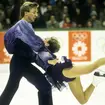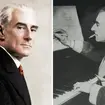Ravel - Boléro
Composed in 1928, Ravel's rhythmic piece will be forever synonymous with ice-skating stars Torvill and Dean.
On Valentine’s Day in 1984, Jayne Torvill and Christopher Dean became the highest-scoring ice skaters of all time when they gained maximum points at the Winter Olympics in Sarajevo. Ravel’s orchestral work Boléro will forever be synonymous with their gold medal-winning victory. The same generation might also have observed its starring role in the Dudley Moore and Bo Derrick film 10.
The history of this piece dates from 1928. Just before embarking on a tour of America, Ravel was commissioned by the Russian ballerina and dance impresario Ida Rubinstein to compose the music for a ballet, provisionally called Fandango. It was while on holiday in the French resort of Saint-Jean-de-Luz that Ravel first developed a Spanish-sounding melody that he couldn’t get out of his head. And as anyone who’s ever heard Boléro will know, Ravel certainly succeeded in ensuring that the insistent, repeated tune and undulating snare-drum rhythms are almost impossible to forget.
The composer was absolutely insistent that the tempo of Boléro should remain constant throughout its fifteen minutes. When the great conductor Arturo Toscanini sped the work up during a performance of it in 1930, Ravel took him to task about it afterwards.



















